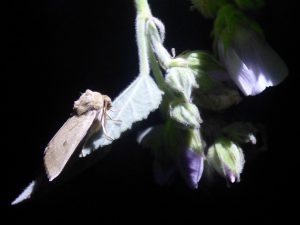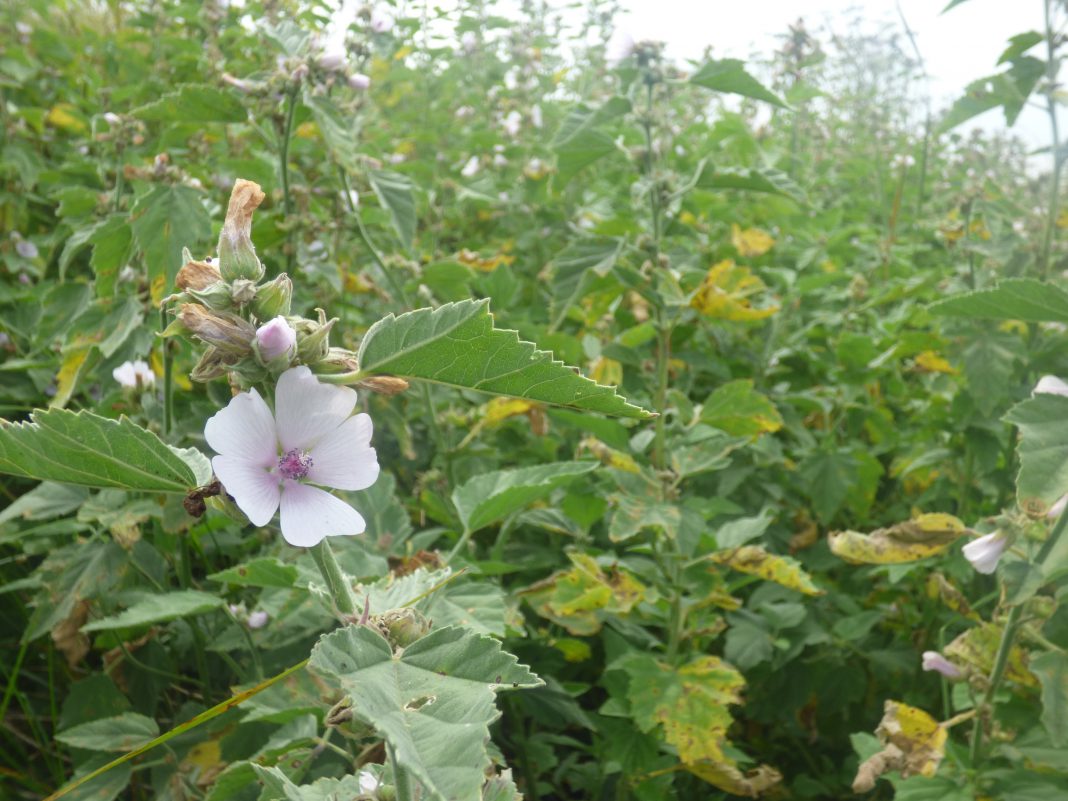Do you have any room on your windowsill or greenhouse where you could grow some marsh mallow seedlings? Butterfly Conservation has launched a three-year project to protect some of our most rare moths. The marsh mallow moth Hydraecia osseola only lives in sites along the Kent/Sussex border and Medway where marsh mallow Althaea officinalis grows.

Seeds are available now for planting inside or outside in April. The moths are picky. They like large clumps of marsh mallow plants – at least 500 flowering spikes – along field margins, pond edges and ditch banks. The charity is asking people to grow seedlings that will later be carefully removed and replanted in great quantities locally.
Marsh mallow plants favour open, damp, low-lying places, marshy places in associated grazing levels. The plants can be sustained in drier areas but active control of other encroaching plant species is often required. It takes several years after introducing plant clumps before the root system can support the moths.
Seeds and growing instructions can be obtained by emailing info@ryenews.org.uk and more information is available online.
Image Credits: Butterfly Conservation .




A very successful project to introduce or reintroduce marsh mallow plants to Castle Water in Rye Harbour Nature Reserve was started 20 years ago – see sussexwildlifetrust.org.uk/news/marshmallow-at-rye-harbour for the full story. If you walk along the old railway path from Brede Lock and go through the metal gate by the reedbed, you can’t miss them. They’re in flower all summer until October. The moths were first found among the plants in 2014.